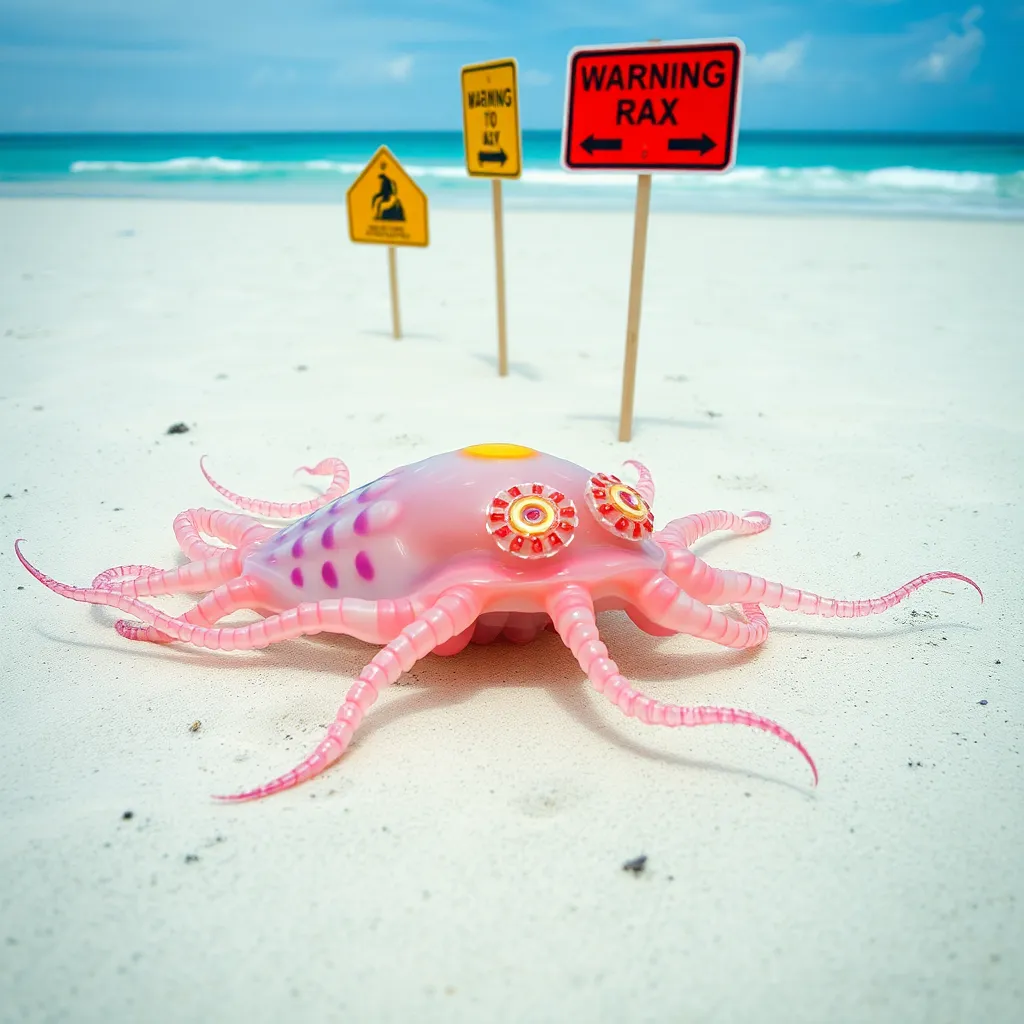

Myrtle Beach Residents on Alert as Portuguese Men-of-War Wash Ashore
Hey, Myrtle Beach! Have you noticed some unusual visitors popping up along our beautiful shores? That’s right—Portuguese men-of-war, those stunning yet slightly terrifying creatures have made their way to our coast, sparking a mix of fascination and caution among locals and visitors alike.
Recently, folks on social media have been sharing photos and stories of these siphonophores—which, despite their jellyfish-like appearance, are not actually jellyfish. They’re unique underwater residents, sporting long, trailing tentacles that house some serious venom. Yes, you heard that right! Their sting can be quite painful, so it’s best to admire these beauties from a distance.
Reports have been flooding in from not only Myrtle Beach but also nearby areas like Pawleys Island. It seems that our coastal buddies have also made surprising appearances on Tybee Island in Georgia and Sullivans Island outside Charleston. Talk about an unexpected road trip for our ocean friends!
Now, you may be wondering why Portuguese men-of-war decided to grace us with their presence this fall. Although these creatures aren’t common in the Myrtle Beach area, sightings do happen from time to time—it’s a bit like finding a treasure on the shore. But just this past June, there were a plethora of sightings, making us wonder what attracts them here.
Interestingly, National Weather Service meteorologist Rachel Zouzias noted that there hasn’t been any severe weather or winds pushing these animals northward. There is a tropical storm brewing near Cuba, but according to her, that’s likely not the culprit either. Instead, it’s thought that the men-of-war might be hitching a ride on the Gulf Stream, riding those ocean currents like champs! Who knew they could surf?
If you’re lucky enough to encounter a men-of-war this week, first of all, take a moment to admire its beauty. Just remember—keep your hands to yourself! Those long tentacles can still sting even after the creature has washed up ashore, and some people have reported lingering stings even weeks later. If you’re out for a barefoot stroll, be extra careful where you step.
In the unfortunate event that you do get stung, there are a few steps you can take. Use tweezers (not your hands!) to remove any tentacles stuck to your skin, and rinse the area with hot water or seawater for about 20 minutes. Over-the-counter medications and hot compresses can help soothe the pain. But if you’ve got trouble breathing, chest pain, or any signs of an allergic reaction—seek medical attention immediately. Safety first, people!
So, as more visitors make their way to our sandy shores, keep your eyes peeled for these spectacular (but potentially painful) creatures. Enjoy their vibrant beauty while respecting their space, and let’s remember to share our coast with all the amazing wildlife out there. Whether you’re basking in the sun or exploring the waves, it’s always important to remain aware of your surroundings. Stay safe, Myrtle Beach, and happy beachcombing!
News Summary Myrtle Beach welcomes the 'Golf with Us' program, a partnership between Bank of…
News Summary In North Myrtle Beach, disabled veterans are experiencing transformation through the PGA HOPE…
News Summary Myrtle Beach is set to host The Q at Myrtle Beach, a new…
News Summary Myrtle Beach introduces the 'Golf with Us' program, an initiative by Bank of…
News Summary A routine shopping trip turned chaotic on April 1 when gunfire erupted inside…
News Summary Castle Peak Holdings' acquisition of Snow King Resort in Jackson Hole marks a…